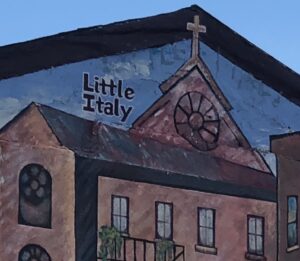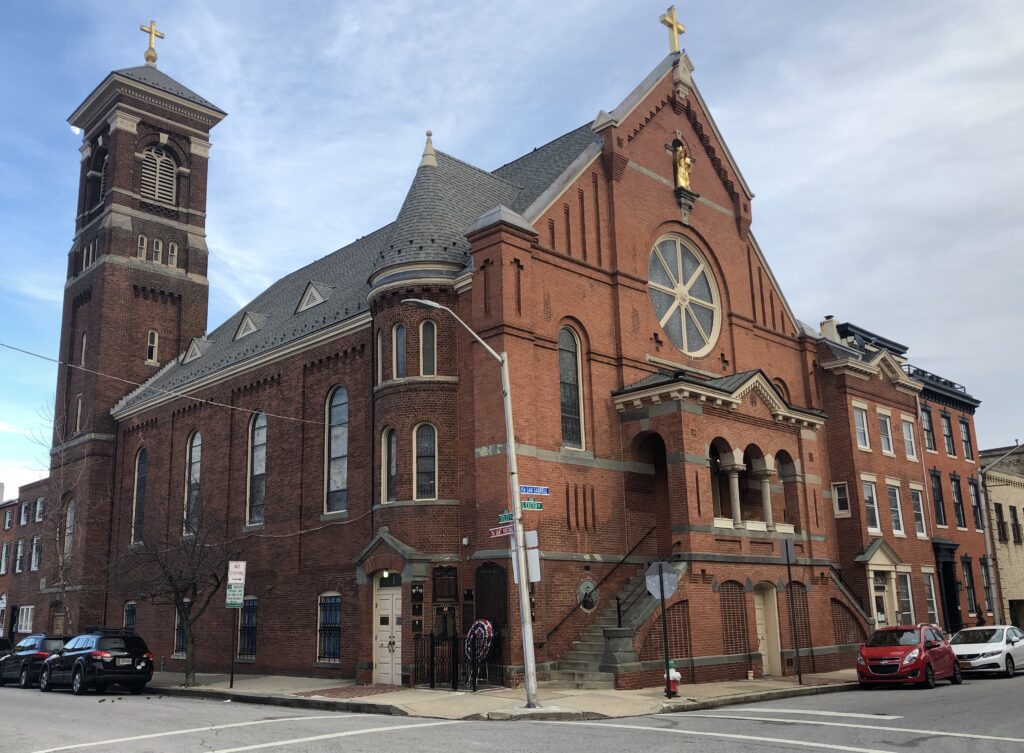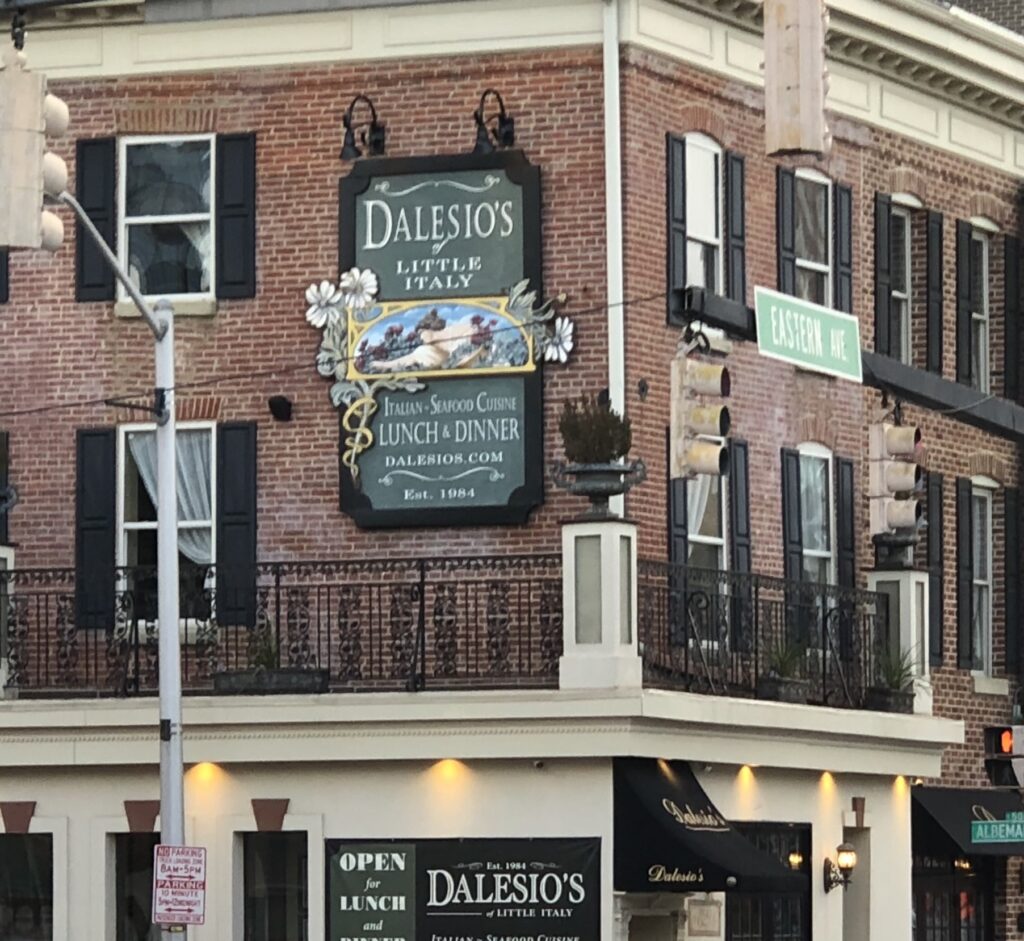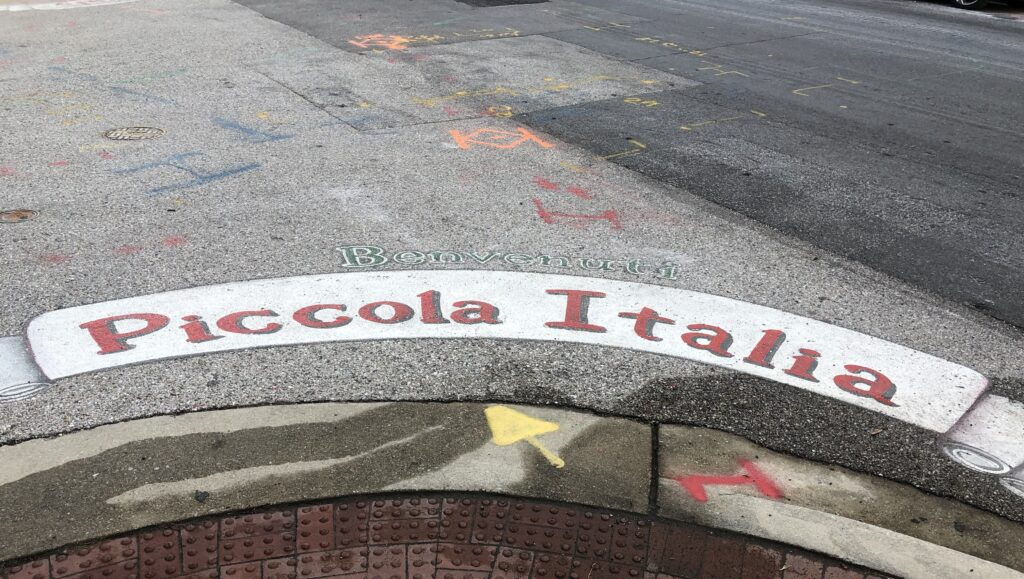
No one in the City of Baltimore ever forgot it. A little before 11:00 a.m. on February 7, 1904, a fire broke out in a commercial building that quickly engulfed the downtown area. The local fire companies lost hope in extinguishing the spreading fire. They dynamited buildings in the fire’s path to create a firebreak, but burning embers, carried by the winds, jumped the break. Firefighters from Washington, D.C. and Philadelphia rushed to the scene, but their equipment could not connect to Baltimore’s hydrants.
The fire burned for thirty hours, destroying over 1,500 buildings on seventy city blocks.
Across a stream, called “Jones Falls,” stood a neighborhood of connected row houses, most about twelve feet wide. It was in the path of the fire. Baltimoreans called it “the Italian Colony.” The neighborhood initially housed Russian Jewish immigrants. As they became more prosperous, the Jewish people left the area, and more recent Italian immigrants took their places.
The Miracle
The Catholic parish of Saint Leo the Great defined Italian life in the neighborhood. It served much more than its primary purpose as a center for worship. Its school educated most of the neighborhood children. Clubs, Sodalities, athletic teams, community meals and many other activities all found a place in the red brick church building on the corner of South Exeter and Stiles Streets.

As the wind-driven fire rapidly moved west, the Italians knew their neighborhood was endangered. The wind could easily carry the fire across the narrow Jones Falls. However, they had a plan. Strong and devout men took the statue of Saint Anthony of Padua off its pedestal in the church. They carried it about three blocks and set it next to the stream. Hundreds of people gathered at the statue and prayed to the saint to spare their parish and homes.
Help Remove Jesus Bath Mat on Amazon
Then, the miracle happened. The winds shifted and drove the fire back into already destroyed areas. The fire never jumped the stream. In gratitude, the residents promised Saint Anthony that they would observe a festival in his name every year. That festival continued for over a century until Covid-inspired politicians forbade the 2020 festival.
A Thriving Organic Community
After the fire, the neighborhood stopped being a loose collection of immigrants and became Baltimore’s “Little Italy.” Unlike many parts of Baltimore, it did not fall victim to urban unrest and economic blight. The fifteen block enclave remains home to many Italian families, including many restauranteurs. Homes in the neighborhood are very desirable. The small homes in Little Italy range in price from $235,000 to $1.27 million.
Little Italy is a truly organic community. Bureaucrats did not decree it into being. No government grants make it prosper. Both those who live there and visitors want it to be there. Inside its vibrant free economy, entrepreneurs make decisions that help their businesses – and, therefore, the neighborhood. Everywhere, there is the presence of Italian customs adapted to the middle of an American urban center. Many restaurants bear family names, and family members still operate them – some in the second and third generations.

Little Italy has one other institution crucial to organic communities, an active Catholic parish at its center. The Baltimore Archdiocese established the parish of Saint Leo the Great in 1880 to meet the Italian community’s needs. Although the parish is not as active as it once was (the school closed in 1980), it is still a community center. Symbolically, its golden statue of Saint Leo overlooks most of the neighborhood.
Although tradition literally springs from its streets and buildings, Little Italy is not a museum. It is an integral part of the city and is affected by its fortunes. Thus, its restaurants do a far better business when the Baltimore Orioles have a good season and long summer evenings encourage fans to dine out before or after the game. Conversely, the recent unrest did not spare the neighborhood. Longtime residents bitterly complain about the Columbus statue that was vandalized and thrown in the harbor during the summer of 2020. The Covid virus has also impacted the community in negative ways. Community leaders express guarded optimism.
Satanic Christ Porn-blasphemy at Walmart — Sign Petition
However, Little Italy has already survived tensions that long ago destroyed similar neighborhoods in other cities. Perhaps the best way to see the importance of organic communities is to compare Little Italy to similar communities that no longer exist.
Other Communities Were Not as Fortunate
A socialistic program known as “urban renewal” destroyed many such communities.
The West End was a partly immigrant neighborhood in Boston. Roughly 12,000 people lived there, many of them Italian. Like Little Italy, it was a neighborhood of row houses, mostly built during the nineteenth century. In 1953, the Boston Housing Authority decided that the West End was, in the language of the time, “blighted.” The American Public Health Association Committee on the Hygiene of Housing prepared a report. It labeled 63% of its homes as “substandard.” It appears no one asked the residents what they thought.
In 1959, the city government, aided by “eminent domain” powers given them in the 1949 Housing Act, forced owners and tenants out and demolished the entire neighborhood. Old residents could not afford the rent in the new apartment buildings. By 1970, the neighborhood had one-sixth of its 1953 population.
How Panera’s Socialist Bread Ruined Company
A 1986 survey of the former residents revealed that over 90% wanted to return to their old neighborhood as it was before urban renewal.
Perhaps nostalgia played a role in the 1986 survey. However, the vast majority would have preferred to stay in their closely-knit neighborhood. These Bostonians were not unique. Similar stories took place in New York City, Chicago, Pittsburgh, Nyack (New York), other parts of Baltimore and many other places.
Like all socialist enterprises, urban renewal was a disaster.
Jane Jacobs examined some aspects of the program in her book, The Death and Life of Great American Cities in 1961. As early as 1965, other voices argued that urban renewal was an abject failure. However, the program – and its bureaucracy – still live. For example, the Supreme Court decreed in 2005 that a city could replace a neighborhood with a privately-owned office building in Kelo v. City of New London, despite which the objections of homeowners.
[like url=https://www.facebook.com/ReturnToOrder.org]
That is all the more reason to rejoice that placed like Baltimore’s Little Italy still exist. They exemplify organic communities that can help to re-establish society on a more human scale.



